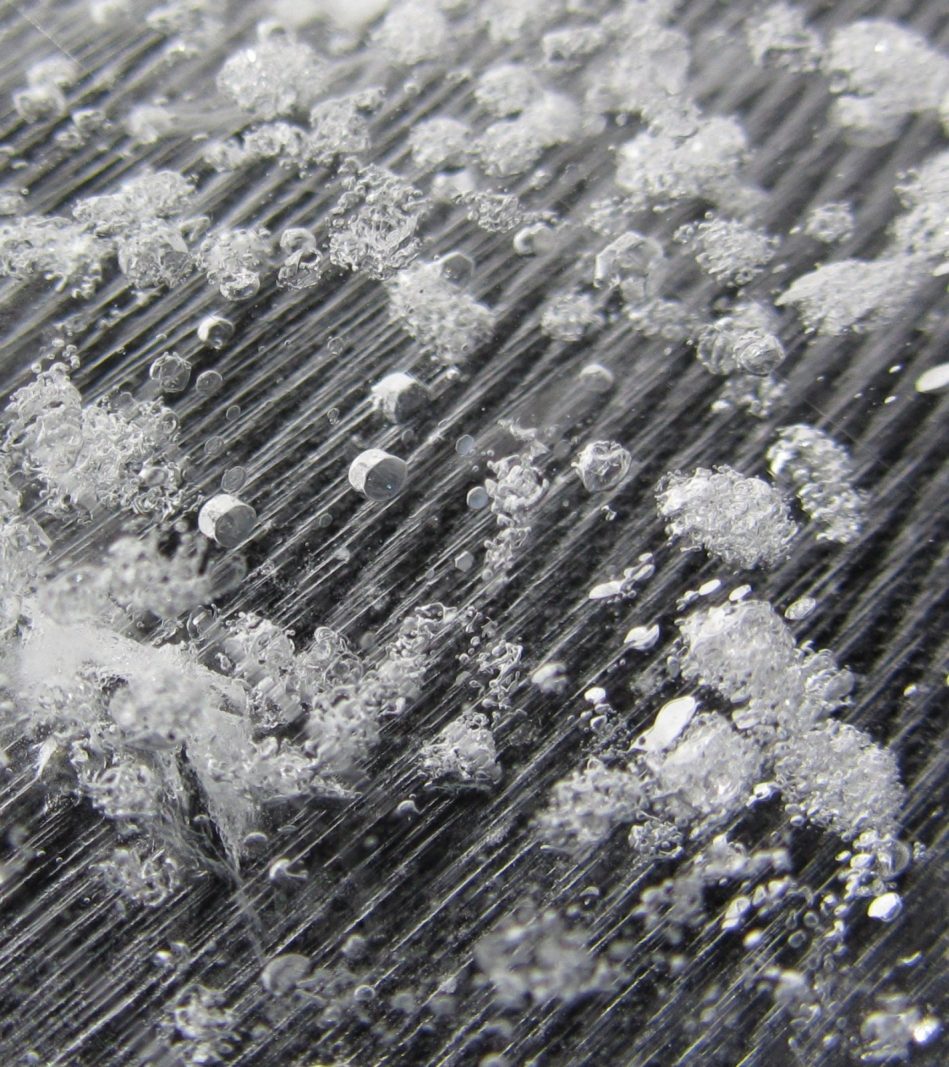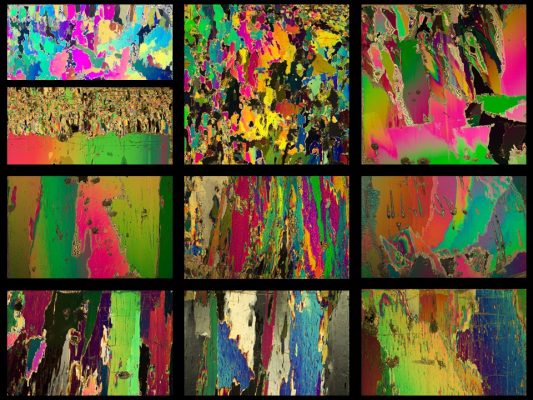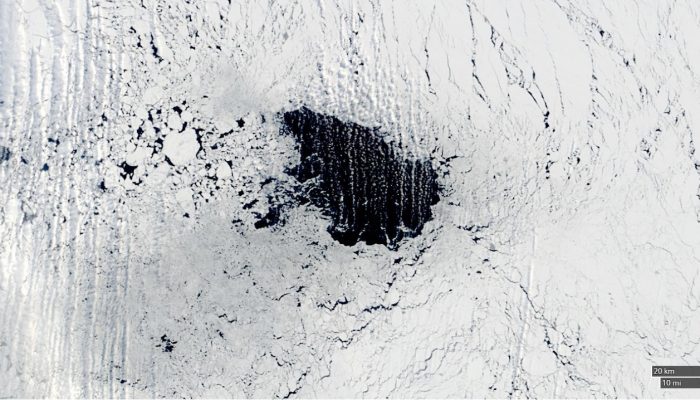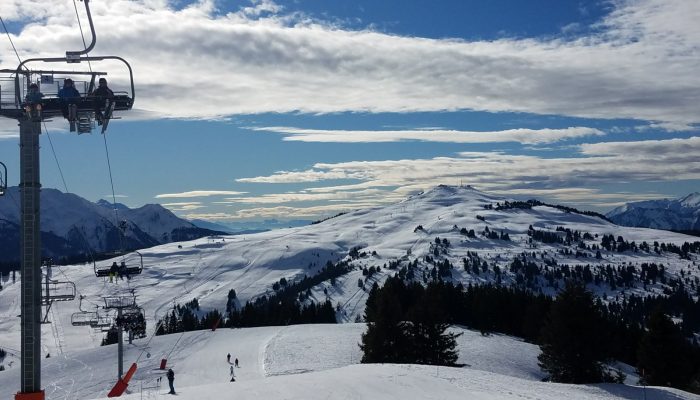It’s pitch black and twenty degrees below zero; so cold that the hairs in your nose freeze. The Arctic Ocean in autumn and winter is inhospitable for both humans and most scientific equipment. This means there are very few close-up observations of sea ice made during these times. Recently, rapidly declining coverage of sea ice in the Arctic Ocean due to warming climate and the impending likelihood ...[Read More]
Image of the Week — Seasonal and regional considerations for Arctic sea ice changes
The Arctic sea ice is disappearing. There is no debate anymore. The problem is, we have so far been unable to model this disappearance correctly. And without correct simulations, we cannot project when the Arctic will become ice free. In this blog post, we explain why we want to know this in the first place, and present a fresh early-online release paper by Ingrid Onarheim and colleagues in Bergen ...[Read More]
Image of the Week – Edible cryosphere at EGU 2018!

It is time again for the annual family meeting of the European Geosciences Union! A lot of interesting talks, posters and events are waiting for you! But this also means you will have to use your brain a lot to concentrate and understand what is going on… Every year, around 15,000 geoscientists meet in Vienna for the EGU General Assembly (see our guide to navigating EGU 2018). It is an exciting ev ...[Read More]
Image of the Week – Super-cool colours of icebergs
It is Easter weekend! And as we do not want you to forget about our beloved cryosphere, we provide you with a picture nearly as colourful as the Easter eggs: very blue icebergs! What makes them so special? This is what this Image of the Week is about… What are icebergs made of? Icebergs are chunks of ice which break off from land ice, such as glaciers or ice sheets (as you’ll know if you rem ...[Read More]
Image of the Week – Geothermal heat flux in Antarctica: do we really know anything?
Geothermal heat flux is the major unknown when we evaluate the temperature and the presence/absence of water at the bed of the Antarctic Ice Sheet. This information is crucial for the Beyond Epica Oldest Ice project, which aims to find a continuous ice core spanning 1.5 million years (see this previous post). A lot of work has been done* to determine geothermal heat flux under the entire Antarctic ...[Read More]
Image of the Week – Broccoli on Kilimanjaro!

On the plateau of Kilimanjaro, Tanzania, the remnants of a glacier can be found and the ice from that glacier contains a rather interesting feature – Broccoli! Not the vegetable, but bubbles that look a lot like it. Our Image of the Week shows some of these strange “Broccoli Bubbles”. Read on to find out more about where these were found and how we can see them. There is not much ice left on the m ...[Read More]
Image of the Week – The colors of sea ice

The Oscars 2018 might be over, but we have something for you that is just as cool or even cooler (often cooler than -20°C)! Our Image of the Week shows thin sections of sea ice photographed under polarized light, highlighting individual ice crystals in different colors, and is taken from a short video that we made. Read more about what this picture shows and watch the movie about how we got these ...[Read More]
Image of the Week – A Hole-y Occurrence, the reappearance of the Weddell Polynya

REMARK: If you’ve enjoyed reading this post, please make sure you’ve voted for it in EGU blog competition (2nd choice in the list)! During both the austral winters of 2016 and 2017, a famous feature of the Antarctic sea-ice cover was observed once again, 40 years after its first observed occurrence: the Weddell Polynya! The sea-ice cover exhibited a huge hole (of around 2600 km2 up to ...[Read More]
Image of the Week – The world in a grain of cryoconite
Microbes growing on glaciers are recognized for their importance in accelerating glacier melting by darkening their surface and for maintaining biogeochemical cycles in Earth’s largest freshwater ecosystem. However, the microbial biodiversity of glaciers remains mysterious. Today, new DNA sequencing techniques are helping to reveal glaciers as icy hotspots of biodiversity. To see a world in a grai ...[Read More]
Image of the week – Skiing, a myth for our grandchildren?
Ski or water ski? Carnival season is typically when many drive straight to the mountains to indulge in their favorite winter sport. However, by the end of the century, models seem to predict a very different future for Carnival, with a drastic reduction in the number of snow days we get per year. This could render winter skiing something of the past, a bedtime story we tell our grandchildren at ni ...[Read More]


